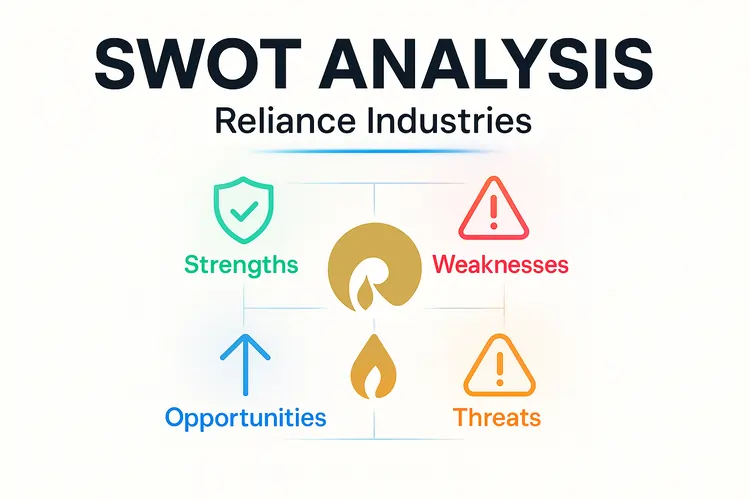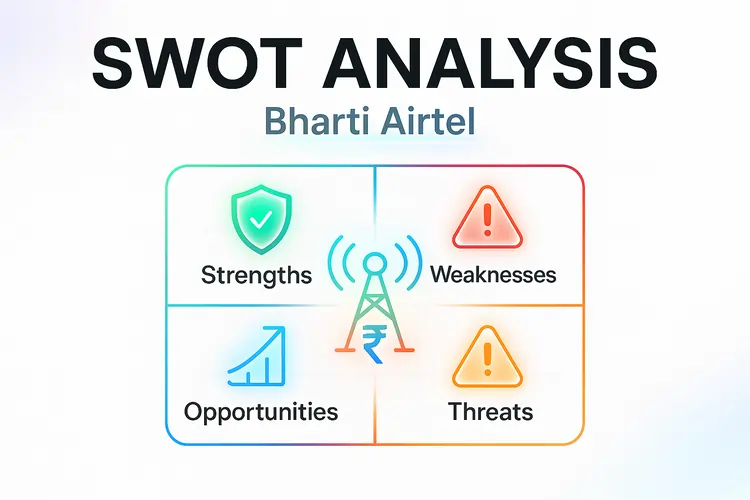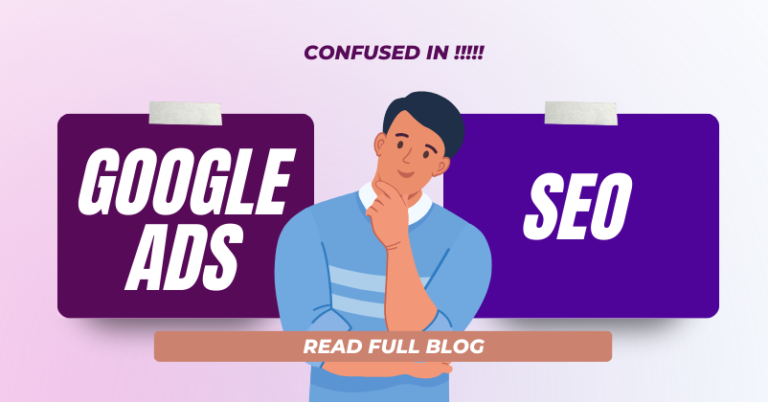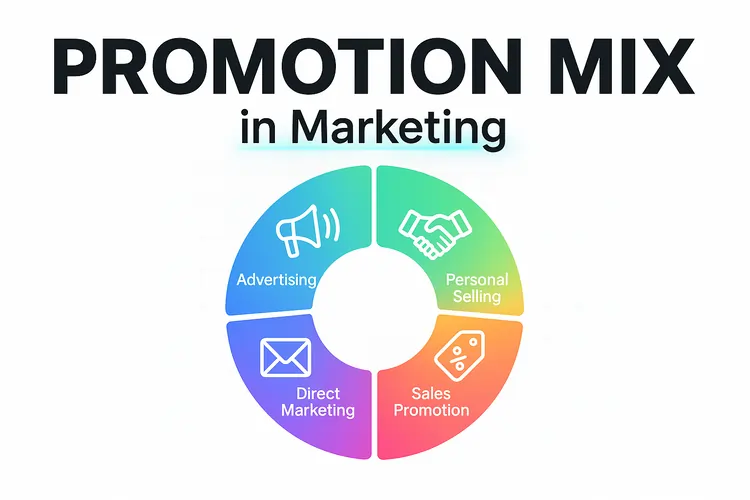
Promotion Mix in marketing is the backbone of every successful growth strategy. It combines advertising, sales promotion, public relations, direct marketing, and personal selling into one unified plan. For Indian businesses in 2025, using the right elements of the promotion mix can turn awareness into measurable sales and long-term brand loyalty.
Consider advertising. A startup running Facebook Ads in India cannot depend on ads alone. The real impact comes when ads are supported by content marketing, PR, and brand messaging. This is how a complete promotion mix strategy generates leads, conversions, and repeat buyers.
Our Facebook Ads case study is a strong example. By aligning advertising with funnel design and sales promotions, we achieved 3,504 sales at just ₹85 CPO. This shows how a well-designed promotion mix example directly improves profitability.
But the components of the promotion mix go far beyond ads. Search-based tactics like blog commenting in India help brands build credibility, backlinks, and visibility. When combined with influencer marketing, YouTube campaigns, and social media content, these methods strengthen the overall promotion mix.
This complete guide will explain every part of the promotion mix in India—from traditional advertising to modern tools like digital campaigns, influencer outreach, and SEO submissions. By the end, you’ll know how to design a mix that attracts attention, drives sales, and builds sustainable brand equity.
📑 Table of Contents
- What is Promotion Mix in Marketing?
- Importance of Promotion Mix in India
- Key Elements of Promotion Mix
- Advertising in Promotion Mix
- Sales Promotion Strategies in India
- Public Relations in Promotion Mix
- Role of Personal Selling
- Direct Marketing Methods
- Digital and Social Media Promotion Mix
- Influencer Marketing in India
- SEO and Submission Sites in Promotion Mix
- Integrated Marketing Communications (IMC)
- Promotion Mix Examples and Case Studies
- How to Build a Successful Promotion Mix
- Conclusion
- Frequently Asked Questions (FAQ)
What is Promotion Mix in Marketing?
Promotion Mix is the collection of marketing communication tools businesses use to create awareness, build trust, and generate demand. It is also known as the marketing communications mix, because it integrates multiple strategies under one message for maximum impact.
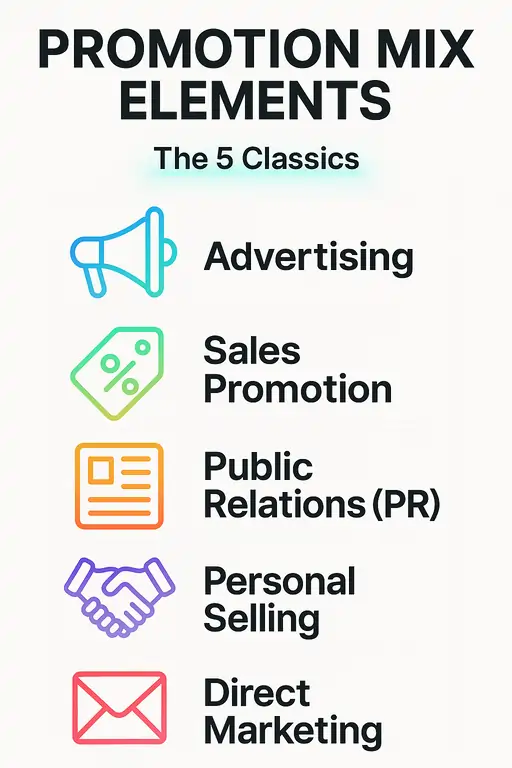
The classic framework defines five major elements of the promotion mix:
- Advertising – Paid promotion through TV, radio, print, digital, or outdoor media. In India, platforms like YouTube, Hotstar, and Facebook Ads dominate because of their ability to reach millions quickly.
- Sales Promotion – Short-term offers such as discounts, cashback, trial packs, or festival deals. Indian e-commerce brands often rely on “Big Billion Days” or Diwali offers to generate urgency and boost sales.
- Public Relations (PR) – Reputation-building activities through press releases, media coverage, and influencer mentions. For Indian startups, a feature in publications like Economic Times or YourStory can skyrocket credibility.
- Personal Selling – One-to-one communication by sales teams through in-person meetings, phone calls, or video demos. This is especially powerful in industries like real estate, education, and B2B services in India.
- Direct Marketing – Personalized communication using email, SMS, WhatsApp, or direct mail. With WhatsApp having over 400 million users in India, direct marketing here has become one of the strongest customer acquisition channels.
In today’s digital-first environment, these five elements are often extended with modern tactics like social media campaigns, influencer marketing, YouTube ads, and SEO submissions. Together, they form a complete promotion mix strategy that keeps businesses relevant in a fast-changing market.
For Indian businesses, the promotion mix in marketing is especially critical. Consumers constantly switch between online and offline platforms. A growing D2C brand might run Facebook Ads in India for awareness, rely on PR for trust, and use SEO tactics like blog commenting or profile creation to build long-term visibility—all integrated into one mix.
Summary: The Promotion Mix combines traditional elements like advertising and PR with digital-first tools such as social media, influencer campaigns, and SEO. When used together, these components help Indian businesses attract attention, earn trust, and drive measurable revenue growth.
Importance of Promotion Mix in India
The promotion mix in India is more than theory—it’s the difference between brands that grow and brands that disappear. In a market of 1.4 billion people, no single channel is enough. You need a mix that balances reach, trust, and conversions.
Ad spend is exploding. India’s advertising industry has already crossed ₹1 lakh crore, with digital taking nearly 46% share. Platforms like YouTube, Instagram, and Facebook Ads dominate urban attention, while TV and radio still rule in smaller towns. This means your promotion mix must cover both digital and traditional media.
Consumers behave differently across regions. A Delhi startup may scale with Facebook Ads and influencer campaigns, but a tier-3 brand in Uttar Pradesh might get better results with WhatsApp, SMS, and local newspaper promotions. A strong promotion mix ensures you don’t miss either audience.
Case studies prove the point. Our Facebook Ads campaign in India delivered 3,504 sales at just ₹85 CPO. But when paired with PR coverage, SEO submissions, and influencer shoutouts, the growth curve was far steeper than ads alone.
The bottom line: The importance of promotion mix in India lies in creating balance—between brand building and quick sales, between online and offline, and between mass reach and personal connection.
Summary: A well-planned promotion mix helps Indian businesses cut through diverse consumer behavior, control rising ad costs, and achieve sustainable growth across both digital and traditional platforms.
Key Elements of Promotion Mix
The elements of the promotion mix form the backbone of marketing communication. Each element has a unique role in attracting customers, building trust, and driving conversions. A successful strategy comes from combining them—not choosing one over the other.
Here’s a breakdown of the five classic elements, plus modern additions relevant for Indian businesses:
- 1. Advertising – Paid promotion through TV, print, outdoor, or digital media. In India, Facebook Ads, YouTube campaigns, and Hotstar ads dominate urban markets. Advertising builds reach fast but requires strong creative and targeting.
- 2. Sales Promotion – Limited-time offers like discounts, cashbacks, festival deals, or free trials. E-commerce giants in India use events such as Flipkart’s “Big Billion Days” or Amazon’s “Great Indian Festival” to create urgency and boost conversions.
- 3. Public Relations (PR) – Gaining credibility through media coverage, press releases, or influencer mentions. A startup featured in Economic Times or YourStory instantly builds trust, which paid ads alone cannot buy.
- 4. Personal Selling – One-to-one interaction with prospects through meetings, calls, or demos. Industries like real estate, education, and B2B services in India rely heavily on personal selling to close high-ticket deals.
- 5. Direct Marketing – Personalized messages via email, SMS, or WhatsApp. With 400+ million users in India, WhatsApp marketing has become a cost-effective way to nurture leads and retain customers.
- 6. Digital & Social Media – Campaigns on Instagram, YouTube, and LinkedIn are now central to the mix. Viral Reels, Shorts, and influencer partnerships amplify brand messages faster than traditional ads.
- 7. SEO & Content Promotion – Visibility through blog posts, commenting, and submission sites. These tactics bring compounding traffic over time and support every other promotion channel.
Why this matters: No single element can carry your marketing. Ads may bring traffic, but PR builds trust. Personal selling closes deals, while SEO keeps the brand discoverable. When combined, these elements make the promotion mix in marketing truly powerful.
Summary: The key elements of promotion mix include advertising, sales promotions, PR, personal selling, and direct marketing—now expanded with digital, social, and SEO tactics for Indian businesses.
Advertising in Promotion Mix
Advertising is the most visible element of the promotion mix. It involves paid communication where brands use mass media or digital platforms to reach potential customers. From TV and print to Facebook Ads and YouTube campaigns, advertising builds brand awareness at scale.
In India, advertising is growing faster than ever. The market crossed ₹1 lakh crore in annual spend, with digital ads holding 46% share. Platforms like YouTube, Instagram, and Facebook Ads in India dominate digital, while TV and radio remain strong in regional and rural markets.
Why advertising matters in promotion mix:
- Mass Reach: Advertising allows businesses to reach millions of people quickly.
- Brand Building: Consistent ad campaigns create top-of-mind awareness.
- Scalability: Digital ads can be scaled instantly with budget adjustments.
Limitations of advertising:
- High Cost: Running TV or performance campaigns requires significant budgets.
- Ad Fatigue: Consumers skip or ignore repetitive ads.
- Competition: In India, cost per click (CPC) has increased sharply due to rising demand.
| Aspect | Traditional Advertising | Digital Advertising |
|---|---|---|
| Reach | TV, radio, print – broad but less targeted | Facebook, YouTube, Google – highly targeted |
| Cost | High upfront costs | Flexible budgets, CPC/CPM model |
| Measurability | Difficult to track ROI | Real-time metrics and analytics |
| Suitability | Mass awareness campaigns | Performance-driven campaigns |
Indian Example: A D2C brand selling beauty products may run Instagram ads to build initial awareness, follow it with YouTube tutorials for engagement, and then retarget users with Facebook Ads campaigns to drive conversions. This layered use of advertising inside the promotion mix ensures both reach and results.
Summary: Advertising in the promotion mix is essential for reach and brand building, but it works best when combined with other elements like PR, sales promotions, and SEO for long-term impact.
Sales Promotion Strategies in India
Sales promotion is one of the most powerful elements of the promotion mix because it creates instant demand. Unlike long-term brand advertising, sales promotions are designed to trigger immediate action—whether that’s a purchase, signup, or trial.
In India, sales promotion strategies are deeply tied to cultural events and consumer psychology. Shoppers wait for deals during festivals, flash sales, and mega discount days, making promotions a crucial part of marketing campaigns.
Popular sales promotion methods in India include:
- Festival Discounts: Brands slash prices during Diwali, Holi, and Raksha Bandhan to attract bulk buyers.
- Cashbacks & Wallet Offers: Platforms like Paytm, PhonePe, and Google Pay offer instant cashbacks to boost digital adoption.
- Flash Sales: Amazon’s “Great Indian Festival” and Flipkart’s “Big Billion Days” are iconic examples of limited-time promotions creating massive urgency.
- Coupons & Vouchers: FMCG brands and e-commerce players distribute discount codes to drive trial and repeat purchases.
- Free Samples & Bundles: Common in beauty and food industries where brands offer trial packs or “Buy 1 Get 1 Free” deals.
Advantages of sales promotions:
- Instant sales lift during campaigns.
- Encourages product trials among first-time buyers.
- Creates urgency with limited-time offers.
Limitations of sales promotions:
- Short-term boost—sales often drop after the offer ends.
- Overuse can hurt brand value and train customers to “wait for discounts.”
- Margins shrink if promotions are not planned carefully.
Indian Example: A smartphone brand offering “No-Cost EMI + ₹2,000 cashback on UPI” during Flipkart’s Big Billion Days combines affordability with urgency. This is a textbook sales promotion strategy in India—driving immediate purchases while boosting digital payments.
Summary: Sales promotions in India work best when tied to cultural events, flash sales, and cashback offers. They deliver quick wins, but must be balanced with long-term brand building to avoid over-dependence.
Public Relations in Promotion Mix
Public Relations (PR) is the credibility engine of the promotion mix. Unlike advertising, where brands pay to push their message, PR builds trust by earning coverage in media, communities, and industry networks. A positive news story or expert mention can create far more impact than a paid campaign.
In India, PR has become a critical tool for startups and enterprises alike. Getting featured in platforms like Economic Times, YourStory, Business Standard, or Mint adds instant authority and positions the brand as trustworthy in the eyes of consumers and investors.
How PR contributes to the promotion mix:
- Credibility: News coverage and third-party mentions feel unbiased, making them more persuasive than ads.
- Visibility: Media stories reach audiences who may never click an ad.
- Long-term trust: Articles, interviews, and features stay online and continue driving brand value.
Limitations of PR:
- Brands can’t control the exact timing of coverage.
- Negative stories can spread as fast as positive ones.
- Harder to measure ROI compared to digital ads.
| Aspect | Advertising | Public Relations |
|---|---|---|
| Control | Brand decides content & placement | Media decides how and when to publish |
| Credibility | Viewed as paid promotion | Seen as independent & trustworthy |
| Cost | High ongoing spend | Lower cost but requires strong networking |
| Longevity | Ads vanish after budget ends | PR stories stay online and compound |
Indian Example: A fintech startup featured in Mint about solving UPI fraud earns credibility that no ad could buy. When supported by profile creation and social proof campaigns, PR becomes a powerful growth lever inside the promotion mix.
Summary: Public Relations in the promotion mix builds credibility and authority. While ads push messages, PR earns trust, making it one of the most effective long-term tools for Indian businesses.
Role of Personal Selling
Personal selling is the human element of the promotion mix. It involves direct, one-to-one communication between a sales representative and a potential customer—through meetings, calls, video demos, or even WhatsApp conversations. Unlike mass media, personal selling focuses on building relationships and closing deals.
In India, personal selling is crucial in industries where products are complex, high-value, or require trust before purchase. Real estate agents, insurance advisors, B2B SaaS sales teams, and education counselors rely heavily on personal selling to explain details and address objections.
Advantages of personal selling:
- High Conversion: Direct conversations allow sales reps to tailor pitches and answer objections instantly.
- Relationship Building: Builds long-term trust, especially in high-ticket sectors like real estate and enterprise software.
- Detailed Explanation: Perfect for products or services that need demonstrations or consultations.
Limitations of personal selling:
- Expensive—requires trained sales teams and time investment.
- Not scalable compared to advertising or digital campaigns.
- Quality depends on the salesperson’s skills and consistency.
Indian Example: A real estate company in Gurgaon may generate leads through Facebook Ads in India, but the actual deal closes only after site visits, presentations, and personal consultations. This shows how personal selling completes the promotion mix by converting interest into revenue.
Key takeaway: Personal selling in the promotion mix is not about mass reach—it’s about depth. It is most effective when paired with digital lead generation, so that sales teams focus only on qualified prospects.
Summary: Personal selling plays a vital role in high-ticket Indian industries like real estate, education, and B2B. It builds trust and closes deals, making it an irreplaceable part of the promotion mix.
Direct Marketing Methods
Direct marketing is the most personalized element of the promotion mix. It involves reaching customers directly with tailored messages—bypassing mass media. The goal is clear: build relationships, nurture leads, and drive measurable conversions.
In India, direct marketing has evolved beyond physical mailers and catalogs. Today, businesses use WhatsApp marketing, SMS campaigns, and email sequences to connect with audiences instantly. With over 400 million WhatsApp users and billions of daily SMS interactions, direct marketing in India is a low-cost, high-impact channel.
Popular direct marketing methods in India:
- WhatsApp Campaigns: Sending offers, reminders, and catalog updates directly to customers’ phones.
- SMS Marketing: Used by banks, e-commerce apps, and telecom providers for alerts and instant offers.
- Email Marketing: Nurturing leads with newsletters, product launches, and educational content.
- Direct Mail: Still relevant in luxury and real estate, where brochures and invites create premium positioning.
Advantages of direct marketing:
- Low cost per contact compared to advertising.
- Highly personalized communication tailored to customer data.
- Easy to measure with open rates, CTR, and response tracking.
Limitations of direct marketing:
- Risk of spam or message fatigue if overused.
- Requires clean, updated customer databases.
- Compliance challenges with privacy and opt-in rules.
Indian Example: An edtech company running Facebook Ads in India may capture leads with a free webinar. The conversion, however, often happens later through a series of WhatsApp reminders and email nurturing—proving how direct marketing completes the promotion mix.
Summary: Direct marketing in India—via WhatsApp, SMS, and email—is a cost-effective way to build relationships and close sales. When combined with ads and PR, it strengthens the promotion mix by adding personalization and long-term customer engagement.
Digital and Social Media Promotion Mix
Digital and social media promotion has become the centerpiece of the promotion mix in India. With millions of daily active users on platforms like Instagram, YouTube, and LinkedIn, brands can no longer depend only on traditional channels. Social media is where awareness, engagement, and conversions now converge.
In India, Instagram Reels, YouTube Shorts, and influencer collaborations dominate digital campaigns. Startups and enterprises alike use these platforms to run paid ads, organic content, and influencer-led promotions that complement advertising, PR, and direct marketing efforts.
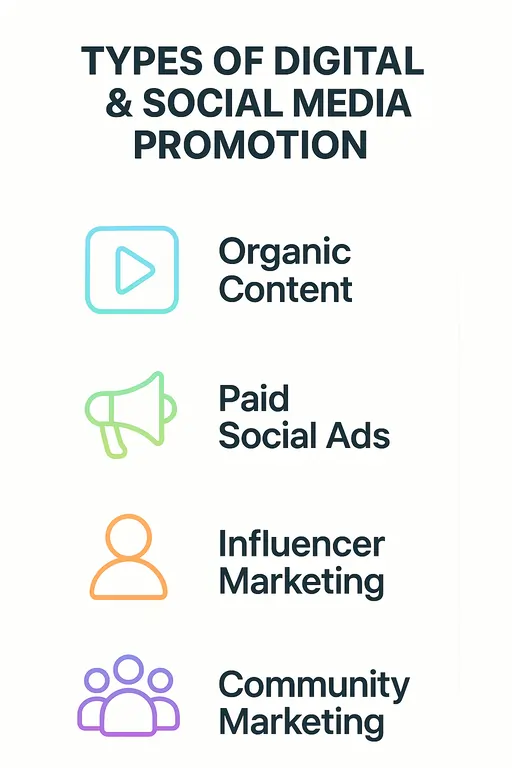
Types of digital and social media promotion:
- Organic Content: Regular posting of Reels, Shorts, carousels, and blogs to build trust and community.
- Paid Social Ads: Running YouTube Ads in India, Instagram campaigns, or LinkedIn ads for targeted reach.
- Influencer Marketing: Partnering with nano and micro-influencers for authentic endorsements at lower costs.
- Community Marketing: Building WhatsApp or Facebook groups where loyal customers share feedback and drive word-of-mouth.
Advantages of digital and social media promotion:
- Precise targeting based on demographics, interests, and behavior.
- Low entry cost—brands can start campaigns with just a few hundred rupees.
- Real-time performance tracking and optimization.
Limitations:
- Algorithms change often, reducing organic reach.
- High competition increases ad costs, especially in metros.
- Risk of fake influencers and low-quality engagement.
| Aspect | Organic Social | Paid Social |
|---|---|---|
| Cost | Free, requires content creation | Flexible budgets, CPC/CPM model |
| Reach | Limited by algorithm | Instant, scalable reach |
| Trust | Builds community and loyalty | Seen as ads, lower trust |
| Best Use | Long-term brand presence | Short-term lead and sales boost |
Indian Example: A fitness brand may post organic workout Reels daily to build community while running YouTube Ads in India for lead generation. Together, these digital promotion methods make the brand discoverable, trustworthy, and profitable.
Summary: Digital and social media promotion in India blends organic content, paid ads, and influencer marketing. It delivers precision targeting, affordable campaigns, and real-time results—making it a must-have in the modern promotion mix.
Influencer Marketing in India
Influencer marketing is one of the fastest-growing parts of the promotion mix in India. It leverages creators on Instagram, YouTube, and other platforms to promote products authentically. Unlike ads, influencer content feels personal, making it more relatable for audiences.
The global influencer market is expected to cross $32 billion in 2025, and India is among the top growth drivers. From nano-influencers with 5,000 followers to mega creators with millions, every level plays a role in shaping consumer decisions.
Types of influencers in India:
- Nano Influencers (1K–10K followers): Affordable, niche communities, higher trust. Perfect for local brands and startups.
- Micro Influencers (10K–100K): Balanced reach and engagement. Strong in fashion, fitness, and food niches.
- Macro Influencers (100K–1M): Larger visibility, used by mid-to-large brands for scaling campaigns.
- Mega Influencers (1M+): Celebrities and top creators. High reach but expensive and less targeted.
Advantages of influencer marketing in India:
- Authentic endorsements build instant trust with audiences.
- Lower cost compared to traditional celebrity endorsements.
- Influencers create reusable content for ads and campaigns.
Limitations and risks:
- Fake followers and bots can inflate engagement numbers.
- ROI is harder to track without strong analytics.
- Mismatched influencer-brand fit can damage reputation.
Indian Example: A D2C skincare brand may collaborate with 100+ nano influencers on Instagram to showcase real-life results. Then, it amplifies the best-performing content as Facebook Ads campaigns. This integration of influencer marketing with paid ads makes the promotion mix more effective.
Summary: Influencer marketing in India thrives on authenticity and affordability. Nano and micro influencers offer the strongest returns, especially when their content is repurposed into ads, PR, and digital campaigns inside the promotion mix.
SEO and Submission Sites in Promotion Mix
SEO promotion is the long-term growth engine of the promotion mix. While ads and influencer campaigns bring instant results, SEO-driven strategies deliver compounding visibility and organic traffic—critical for sustainable brand growth in India.
One of the most practical methods for SEO promotion in India is using submission sites. These platforms allow businesses to publish content, build backlinks, and increase authority at low cost. When integrated into the promotion mix, they support advertising, PR, and direct marketing by improving search visibility.
Types of submission sites that boost SEO:
- Blog Commenting Sites: Engaging in relevant blogs builds backlinks and authority while driving referral traffic.
- Profile Creation Sites: Creating profiles on high-DA platforms improves brand credibility and link diversity.
- PDF Submission Sites: Sharing guides, reports, or brochures in PDF format builds strong backlinks and educates users.
- PPT Submission Sites: Uploading slide decks with case studies and strategies enhances authority and shareability.
- Classified Submission Sites: Posting free ads on local classified platforms helps businesses reach regional buyers at zero cost.
Advantages of SEO submission sites:
- Affordable way to build backlinks and domain authority.
- Supports faster indexing of new websites.
- Reaches niche audiences searching for specific content.
Limitations:
- Low-quality submissions can hurt SEO instead of helping.
- Requires consistency—one-time posting rarely moves rankings.
- Needs to be combined with content marketing for full impact.
Indian Example: A digital marketing agency may run Facebook Ads to generate leads but also publish PDFs of case studies and PPTs of campaign strategies. These assets earn backlinks, improve Google rankings, and make the overall promotion mix stronger.
Summary: SEO and submission sites add long-term visibility to the promotion mix. Blog commenting, profile creation, PDFs, PPTs, and classifieds help Indian businesses gain authority and organic traffic while supporting ads and PR campaigns.
Integrated Marketing Communications (IMC)
Integrated Marketing Communications (IMC) is the glue that holds the promotion mix together. Instead of running ads, PR, and digital campaigns separately, IMC aligns them under one strategy so customers experience a single, consistent story at every touchpoint.
In India’s fragmented media landscape, IMC is essential. A consumer may see a Facebook ad in the morning, read a news article at lunch, and watch a YouTube video in the evening. Without integration, the messages clash. With IMC, every touchpoint reinforces the same positioning, making campaigns more memorable and effective.
Key benefits of IMC in India:
- Consistency: Avoids mixed messaging across platforms.
- Efficiency: Budgets are used smarter, as campaigns complement each other.
- Stronger Impact: Multiple touchpoints deliver a unified story, making it easier for customers to trust and act.
| Promotion Mix Element | Role in IMC | India-Specific Example |
|---|---|---|
| Advertising | Creates mass awareness and reach | YouTube Ads + Hotstar campaigns during IPL |
| Sales Promotion | Triggers instant sales and urgency | Flipkart Big Billion Days + cashback offers |
| Public Relations | Builds credibility and trust | YourStory feature for a funded startup |
| Direct Marketing | Personalized engagement and nurturing | WhatsApp campaigns for local retailers |
| Digital & Social | Ongoing engagement and interaction | Instagram Reels + influencer collabs |
Indian Example: A fintech startup may launch YouTube ads for awareness, push Diwali cashback offers for sales promotion, gain PR in Economic Times, and nurture leads through WhatsApp. When these are coordinated under IMC, the customer sees one unified message instead of scattered promotions.
Summary: IMC ensures that every promotion mix element—ads, PR, sales promos, digital, and direct marketing—works together. For Indian businesses, this integration maximizes ROI and builds stronger, more consistent brands.
Promotion Mix Examples and Case Studies
Understanding theory is important, but seeing promotion mix examples in real campaigns makes the concept more practical. In India, businesses of all sizes—from startups to established enterprises—use different combinations of advertising, PR, sales promotions, and digital channels to achieve growth.
Here are some strong promotion mix case studies you can learn from:
- Facebook Ads + Funnel Design: Our Facebook Ads case study in India shows how a smart mix of paid ads and sales funnels delivered 3,504 sales at ₹85 CPO. Ads created awareness, while remarketing and direct nurturing closed conversions.
- YouTube Ads + Influencers: Many Indian brands work with a YouTube Ads agency to combine video ads with influencer shoutouts. For example, fitness brands use Shorts + collabs with micro-influencers to build both reach and trust.
- SEO + Submission Sites: Agencies often pair campaigns with SEO-driven tactics. Using blog commenting sites, PDF submissions, and PPT shares, businesses gain backlinks that support long-term rankings while ads bring immediate leads.
- PR + Social Proof: A funded startup featured in YourStory combines media coverage with digital ads. PR builds authority, while ads scale visibility—showing how earned and paid work best when integrated.
- Instagram Bios + Ads: Even small elements like crafting a catchy Instagram bio or bio in Hindi matter. When paired with ads and influencer content, they strengthen brand discovery at zero extra cost.
Key learning from these case studies:
- No single element of the promotion mix is enough on its own.
- Best results come when advertising, PR, SEO, and influencer marketing work together.
- Indian campaigns perform better when adapted to cultural triggers—festivals, local languages, and regional influencers.
Indian Example: An e-commerce brand may run YouTube ads during IPL, add festival discounts as sales promotions, gain coverage in Economic Times, and nurture leads via WhatsApp. This full-stack promotion mix delivers both instant sales and long-term trust.
Summary: Promotion mix examples from India show that the biggest wins come from integration—ads create reach, PR adds trust, SEO builds visibility, and influencers drive relatability.
How to Build a Successful Promotion Mix
Creating a successful promotion mix requires more than picking channels randomly. It needs structure, consistency, and balance between short-term sales and long-term brand equity. For Indian businesses, affordability and scalability also matter—every rupee must deliver measurable returns.
Here’s a proven step-by-step framework for building a promotion mix in India:
- Define Clear Objectives: Decide whether your goal is awareness, lead generation, sales, or retention. A real estate company may focus on leads, while a D2C brand targets quick conversions.
- Understand Your Audience: Map where your buyers spend time. Urban millennials may be on Instagram Reels and YouTube, while tier-2 audiences respond better to WhatsApp, SMS, and local promotions.
- Select Core Promotion Mix Elements: Pick 2–3 primary channels to start. For example, run Facebook Ads for awareness, PR for credibility, and direct marketing for follow-ups.
- Align with Cultural Moments: In India, timing matters. Launch offers around Diwali, Holi, or month-end paydays to maximize response rates.
- Integrate Channels (IMC): Make sure all messages are consistent. A campaign headline should look the same across ads, PR articles, WhatsApp reminders, and YouTube videos.
- Test and Optimize: Start small, measure results, and scale what works. Use A/B testing on creatives, run PR in multiple outlets, and compare ROI across channels.
- Build Owned Assets: Don’t rely only on ads. Grow an email list, WhatsApp groups, or communities to maintain control when ad costs rise.
- Measure ROI: Track metrics like CAC, ROAS, brand lift, and repeat purchase rates. Tools like Google Analytics, Meta Ads Manager, and Zoho Campaigns make it easier to measure in India’s digital ecosystem.
Indian Example: A fashion startup may launch YouTube ads for awareness, add cashback offers during Diwali for sales promotion, get featured in YourStory for PR, and follow up via WhatsApp campaigns. This 360° approach shows how to build a promotion mix that works both online and offline.
Summary: To build a successful promotion mix in India, define objectives, know your audience, pick the right channels, align with cultural triggers, integrate campaigns, and measure ROI consistently.
Conclusion
The promotion mix in marketing is not about choosing one channel—it’s about combining the right tools to achieve consistent growth. For Indian businesses, this means balancing advertising, PR, sales promotions, direct marketing, digital campaigns, and influencer partnerships into one integrated strategy.
A brand may win quick sales with Facebook Ads or festival discounts, but long-term success comes from adding PR, SEO submissions, and owned channels like WhatsApp and email lists. Together, these elements form a promotion mix that adapts to India’s diverse markets and rising digital adoption.
Final Thought: The businesses that thrive in 2025 will be those that treat the promotion mix as a system, not a set of tactics—measuring ROI, integrating campaigns, and staying relevant to shifting consumer behaviors.
Summary: A strong promotion mix in India blends traditional and digital methods, aligns with cultural triggers, and delivers measurable ROI. Integration is the key to long-term growth.
—
Frequently Asked Questions (FAQ)
Here are answers to common queries about the promotion mix in marketing, designed for quick reference:
1) What is promotion mix in marketing?
The promotion mix in marketing is the combination of advertising, PR, sales promotions, personal selling, and direct marketing that businesses use to communicate with customers and drive sales.
2) Why is promotion mix important in India?
Promotion mix is important in India because consumer behavior is diverse. Digital ads work in metros, while WhatsApp, SMS, and local media dominate smaller towns. A balanced mix ensures reach and trust across all segments.
3) What are the 5 elements of promotion mix?
The 5 elements are advertising, sales promotion, public relations, personal selling, and direct marketing. Modern promotion mix strategies also include digital, social media, influencer, and SEO-driven campaigns.
4) What is the difference between advertising and promotion mix?
Advertising is one element of the promotion mix. The promotion mix is broader, covering ads, PR, sales promotions, influencer campaigns, SEO, and direct marketing together.
5) How do Indian businesses use promotion mix?
Indian businesses use promotion mix by combining Facebook and YouTube ads with festival discounts, PR features, WhatsApp campaigns, and influencer marketing. This integrated approach balances instant sales with long-term trust.
6) Can small businesses in India afford promotion mix strategies?
Yes. Small businesses can start with low-cost methods like WhatsApp marketing, blog commenting, classified submissions, and micro-influencer campaigns, scaling up to paid ads and PR as budgets grow.
7) What is an example of a successful promotion mix campaign?
Our Facebook Ads case study in India showed how ads + funnels + remarketing delivered 3,504 sales at ₹85 CPO. Adding PR and SEO made the results even stronger.
